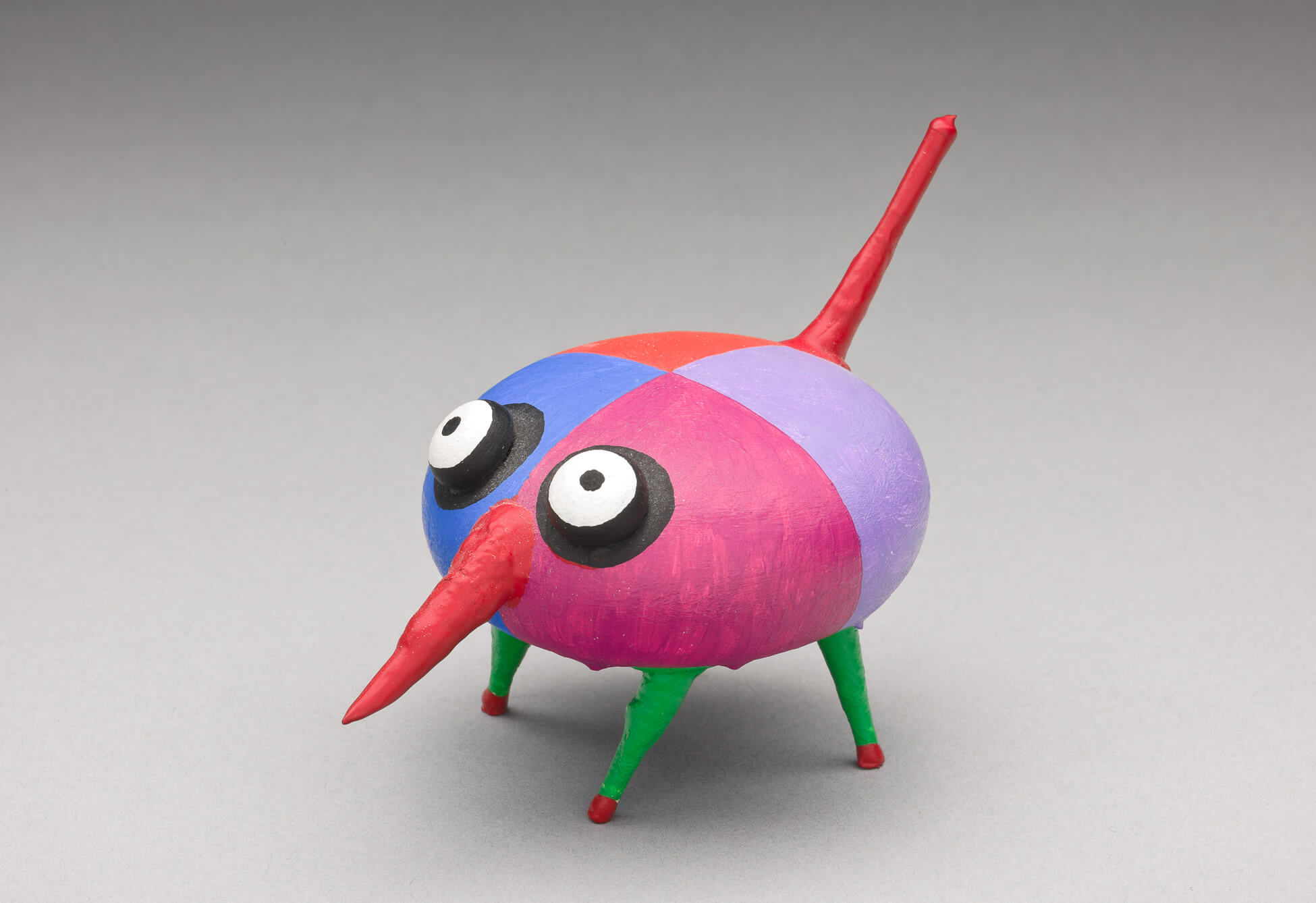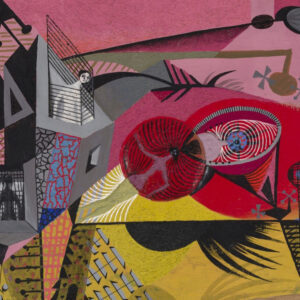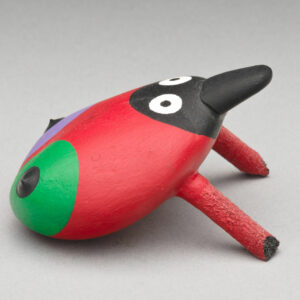Mini-Bestiary no. 31 c.1971

Alfred Pellan, Mini-bestiaire no 31 (Mini-Bestiary no. 31), c.1971
Painted stone and wood, 6.8 x 9 x 5.7 cm
Musée national des beaux-arts du Québec, Quebec City
Created primarily between 1971 and 1975, Mini-bestiaire (Mini-Bestiary) is a collection of small stones, which Alfred Pellan transformed into insect-like creatures by painting on faces in bright colours and adding wooden legs. Most are decorated with interesting patterns of dots and stripes that draw the eye; their expressions are open, bright, and curious, even smiling at times. Many of the fantastic beasts in Pellan’s paintings, sketches, and illustrations provoke feelings of distress—in Bestiaire no 3 (Bestiary no. 3), 1974, his nightmarish beings devour helpless humans whose mute faces communicate their pain. In contrast, the comical Mini-Bestiaries reveal the artist’s playful character.
-
Alfred Pellan, Bestiaire no 3 (Bestiary no. 3), 1974
Oil and India ink on paper, 26.3 x 37 cm
Musée national des beaux-arts du Québec, Quebec City
-
Alfred Pellan, Mini-bestiaire no 5 (Mini-Bestiary no. 5), c.1971
Painted stone and wood, 6.4 x 5.5 x 2.7 cm
Musée national des beaux-arts du Québec, Quebec City
-
Alfred Pellan, Mini-bestiaire no 10 (Mini-Bestiary no. 10), c.1971
Painted stone and wood, 3.7 x 5.8 x 4.7 cm
Musée national des beaux-arts du Québec, Quebec City
Pellan was fascinated with Surrealism and often used his work to reframe the movement’s philosophies to better correspond with his own ideas on love, eroticism, freedom, and art. The Mini-Bestiaries were an important evolution in this process. Pellan had explored haptic impressions in his Jardins (Garden) series from 1958. But now, the strange creatures that populated his oeuvre took on real form and shape and began to invade the material world.
This development allowed the viewer to interact with Pellan’s work on a concrete level, touching and feeling it. Breaking the dimensional barrier between the work and the observer granted new access to the artist’s thoughts and experiences. While handling these curious animal-objects, we can almost imagine ourselves being transported to their point of origin: colourful rock formations in the Gaspésie, Quebec.
In 1944, Pellan visited the small town of Percé to see his friend André Breton (1896–1966), a visionary poet and the so-called father of Surrealism. Breton had briefly settled in the region to finish his book Arcanum 17 (1944), and he compared the agates making up the rocky landscape to a “symphony.” Driven by his impassioned “agatomania,” Breton would spend hours searching for the colourful rock formations—expeditions that Pellan eagerly joined. As Breton recalled, Pellan “came here in 1944 and we met again at Percé. We were both interested in agates and we went looking for them on the beaches of l’Anse-à-Beaufils and elsewhere.” The two men talked about art as they collected rocks, shells, and other natural objects. Nearly thirty years later, Pellan’s imagination was sparked by these small stones: in their shapes, he saw the weirdest and most whimsical animals.

 About the Author
About the Author
 More Online Art Books
More Online Art Books
 Acknowledgements
Acknowledgements